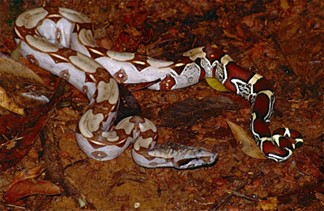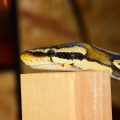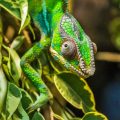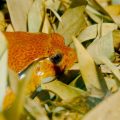What I will recommend is to offer one prey item per feeding. Following the guideline given below will ensure that your pet will live a healthy and long life. Contrary to other keepers, I think it’s best that you should never do “power – feeding,” – this is the process where you place another 1 or 2 prey items inside your pet’s mouth as it swallows the previous prey. Power feeding is similar to forceful feeding, and some keepers do this if they want to rapidly grow their Columbian boas to great lengths in just a few months’ time. Some keepers successfully use this method to grow their boas to their desired size, and some have also bred female species at 18 months of age using power feeding. However, it’s almost without exception that such snakes live a shorter life span. You will notice that power – fed boas have abnormal size heads, and it’s usually smaller and not proportionate to their body size. Feeding your pet properly and healthily will make him/ her live for more than 20 years plus less trips to the vet.
Follow the recommended guidelines below or better yet ask your vet if these measurements are suitable for your pet:
Baby Columbian Red – Tail Boas (18 to 22 inches)
- This is suited for newborn boas up to 3 months of age. They should be fed with fuzzy or pinkie mice/ rats.
- You can feed them 1 prey item at least every 4 to 5 days.
- Sometimes if you feed pinkie rats/ mice, it will allow you to feed every 7 days which could be a much easier schedule for you. You can feed every Saturday if that’s your choice.
Juvenile Columbian Red – Tail Boas (2 to 3 feet)
- This is suited for juvenile boas from 3 to 12 months of age. They should be fed with fuzzy or weanling mice/ rats.
- You can feed them 1 prey item once a week.
- In other places, weanlings are referred to as Rat Pups.
Yearling Columbian Red – Tail Boas (3 to 4 feet)
- This is suited for year – old boas from 1 to 2 years of age. They should be fed with small to medium size rats.
- You can feed your boa with 1 prey item or more (depending on the size of the rat/ desired growth rate) every 2 weeks to once a month.
Adult Columbian Red – Tail Boas (4 feet and up)
- This is suited for fully matured boas from 2 years of age and older. They should be fed with large to jumbo sized rats.
- The quantity or size of the rat you will offer to your adult boa will depend on their current girth and length.
- Adult female boa constrictors can be fed every 2 weeks while the male boas can be fed once a month. This will keep your pet compatibly sized especially if you plan on breeding them.
- You can also feed your adult boa with rabbits, but the size of the rabbit will depend on the current size of your adult Columbian boa.
If you follow the feeding guidelines aforementioned which are just 1 prey item at a time, you can expect your pet Columbian boa to grow to an average size of 7 to 8 feet. If you change your feeding guidelines, you will definitely change the growth rate of your pet. Before you change your pet’s diet, make sure to consult it first to your vet. If you really need to change the diet, you may need to gradually do it and check first if it works out for your pet.
I also recommend placing the frozen/ thawed prey items inside your pet’s enclosure, and just leave it there overnight. If you find that it’s uneaten the next day, make sure to dispose the food, and just feed another fresh item.
It’s also important to note that you should never handle the prey items as you place it inside your pet’s cage because your hand can be mistaken as food! It’s better if you use tongs or similar items to protect yourself. You shouldn’t also handle your pet after preparing food items because your hands will smell like rats/ rodents, and if your boa smelled that, he/ she can take a bite on you.
If your Columbian boa is a finicky eater, you can try feeding them live prey items, but I highly recommend that live preys should be your last resort. If your pet really prefers live food than thawed preys, make sure to monitor your pet after placing the live animal inside its cage to avoid any injuries to your snake.
Most snake species will eat at night, and they also prefer a varied diet so it’s best that you offer various types of rodents/ rat species as long as it’s free of diseases.






 Author and long-time animal lover. Sharing knowledge on pet care through experience and the written word.
Author and long-time animal lover. Sharing knowledge on pet care through experience and the written word.